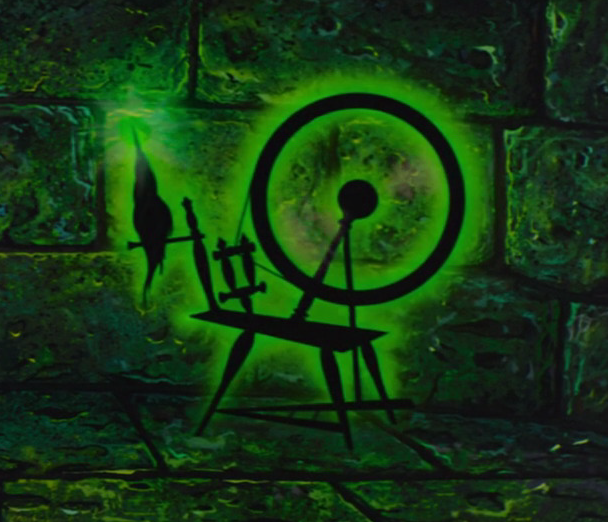 When I was considering buying my now pre-loved Kormski Harp Loom I had been investigating its options. Before I swapped out this out over my Ashford Rigid Heddle I had to be sure it was worth it. It was the same size as my rigid heddle (80cm), fits Ashford Heddles (sweet!), folds (oh thank god that size of loom is insane to carry, I would hate to try the 120cm!). The only negative seemed to be the ratchet and tension. Kromski has now addressed that and all their new looms are now Kromski Harp Forte! The main difference being the plastic ratchet pawl system had been upgraded to a metal one that included a rare earth magnet that acts as a lock system similar to the Ashford one. They also sell upgrades for older looms. So I spent the evening pimping out my Harp Loom to a Harp Forte with double heddles.
When I was considering buying my now pre-loved Kormski Harp Loom I had been investigating its options. Before I swapped out this out over my Ashford Rigid Heddle I had to be sure it was worth it. It was the same size as my rigid heddle (80cm), fits Ashford Heddles (sweet!), folds (oh thank god that size of loom is insane to carry, I would hate to try the 120cm!). The only negative seemed to be the ratchet and tension. Kromski has now addressed that and all their new looms are now Kromski Harp Forte! The main difference being the plastic ratchet pawl system had been upgraded to a metal one that included a rare earth magnet that acts as a lock system similar to the Ashford one. They also sell upgrades for older looms. So I spent the evening pimping out my Harp Loom to a Harp Forte with double heddles.
I put in an order with the only Australian Kromski dealer KraftKolour. The upgrade was only $39 and the second heddles $35, which is comparable to Ashford price for a double heddle. The difference being Kromski just adds an additional set behind your current heddle blocks. Ashford, you have to remove your heddle block and put a new one on that holds both heddles. I will have to do a comparison on heddle blocks and how they are made as I am noticing some differences where there might actually be a winner and something to consider for someone looking between the looms. Shipping was a decent price and decent time frame. Nothing interesting to say of the dealer as everything happened smoothly and as expected.
So I spent about an hour assembling both products, though the second heddle installation was 2 minutes!
 |
| Instructions that ended up in the bin! |
So I had previously seen a YouTube video by Paradise Fibers and was very glad it was available and well done because the instructions were just black and white pictures....
This was very easy to follow along and I was very glad to have it up on my tv while I was assembling it.
Assembly was pretty easy per se and only required a common Phillips head screwdriver. The demonstration uses an electric screwdriver just for speed of disassembling the loom.
 |
| Lots of screws! And my remote to stop and start the video. |
The video suggested removing the front and back cloth beam, but I didn't and had no issues. So one less item to worry about.
Installing the ratchet and pawl system is very easy, especially is you put together the loom originally (which I didn't). The hardest part and the one that caused the most swearing is the rare each magnet.
This magnet will stick to everything and you will spend 5mins trying to pry the two magnets apart from each other and then swear when you hear them click back....
This part requires a bit more skill, but if I can pull it off anyone can. You do need a bit of hand strength or a good drill at this stage as there is no pre-drilled hole for the magnet to be screwed in. So you need to position it and then screw it in. It is completely possible, but you need some strength. I have pretty sucky and weak joints so I would say it would be easier for others without joint problems.
 |
| New metal ratchet vs old plastic |
 |
| Kromski new lock system |
 |
| Ashford lock system |
Putting the second set of heddle blocks on was super simple! Just line up with the pre-drilled holes, insert the one screw and tighten. DONE!
 |
| Old vs new |
It will be interesting to compare how each company approaches the double heddle spacing and how the blocks are shaped. I have a feeling I may like this one over my knitters loom version. Though I still think the winner heddle blocks will be the Majacraft magnet ones I am keen to get and try.
The only thing to consider is with the rare earth magnet is if you have a pacemaker etc. I do have internal bling, so I just avoided dropping it near my internal metal.
The only thing to consider is with the rare earth magnet is if you have a pacemaker etc. I do have internal bling, so I just avoided dropping it near my internal metal.



































